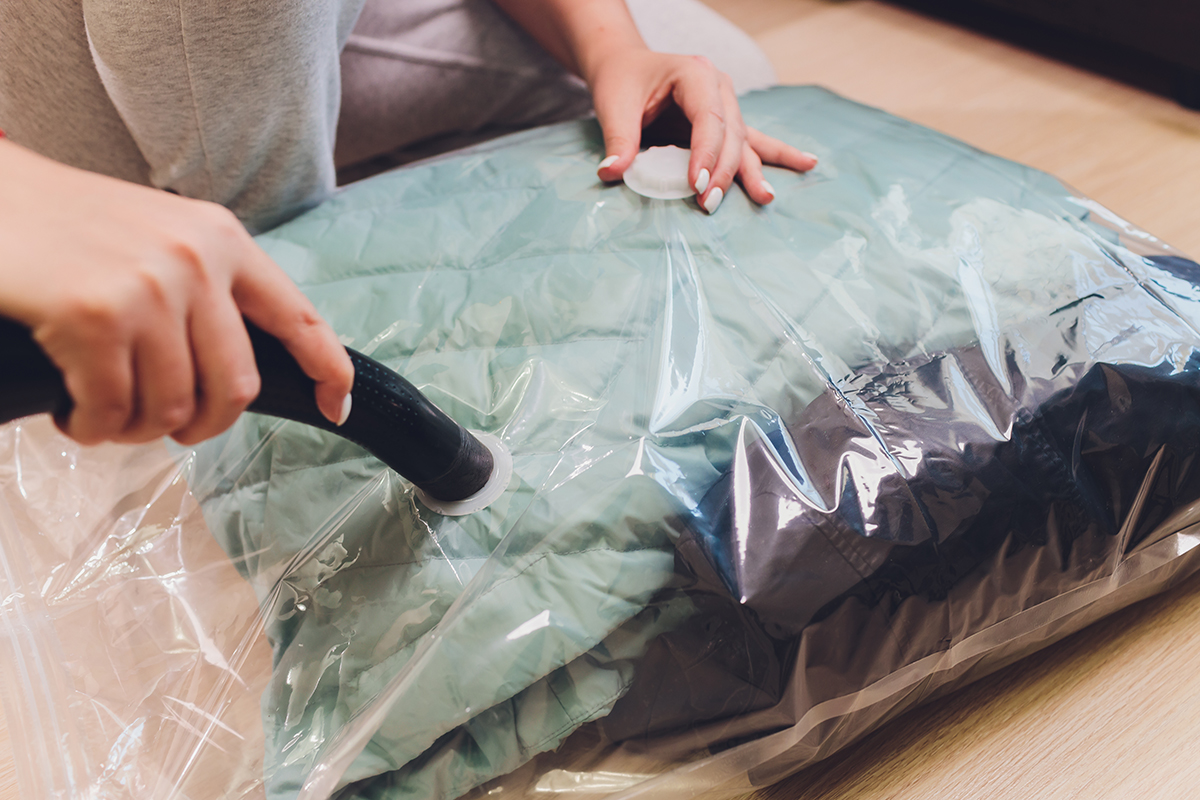Separate clothes that you wear seasonally from those you use year-round.
1. Sort and Declutter
Before you start packing, go through your clothing and sort them into categories. Separate clothes that you wear seasonally from those you use year-round. Additionally, decide which items you want to keep, donate, or dispose of. By decluttering before packing, you’ll ensure that you only store what you truly need, saving space and simplifying the process.

2. Clean and Launder
Ensure that all the clothes you plan to store are clean and dry. Any lingering stains, dirt, or moisture can lead to mold and mildew growth over time. Washing and thoroughly drying your garments will help preserve their quality during storage.
3. Gather Packing Supplies
To pack your clothing efficiently, gather the necessary supplies, such as plastic bins with lids, wardrobe boxes, packing tape, bubble wrap, and packing paper. Using clear plastic bins can be beneficial, as they allow you to see the contents without having to open each box. Plastic bins are key in a mini storage, as they will protect your clothing from unforeseen damage like leaks and water damage from neighboring units.
4. Fold and Organize
Fold your clothing items neatly and uniformly to save space and avoid wrinkles. For delicate or valuable garments, use acid-free tissue paper or white cotton sheets between layers to prevent creasing. Consider organizing clothes by type or season, so you can easily locate specific items when needed.
Fold your clothing items neatly and uniformly to save space and avoid wrinkles

5. Use Vacuum-Sealed Bags
For seasonal clothing, like heavy jackets, snow gear, or items that take up significant space, consider using vacuum-sealed bags. These bags remove excess air, reducing the volume of your clothing significantly. It’s important to remember to avoid using them for delicate fabrics, as the compression can cause creasing or damage.
6. Protect Against Moisture
Humidity and moisture can be harmful to clothing in storage. To protect your garments, place moisture absorber hanging bags or silica gel packets inside the storage units. This will help maintain a dry environment and prevent mold and mildew growth.
Use moisture absorber hanging bags in the storage units.

7. Utilize Hanging Wardrobe Boxes
For dresses, suits, and other garments that wrinkle easily, invest in hanging wardrobe boxes. These specialized boxes have built-in hanging rods that allow you to store your clothes as if they were hanging in a closet. This option is particularly useful for short-term storage or when you need quick access to specific outfits. Don’t forget to label the boxes, so you can easily find the items when you need them.
Create pathways in the unit to access your clothing easily.
8. Maximize Space
Optimize the use of space within the storage unit by stacking boxes and bins strategically. Place heavier items at the bottom and lighter ones on top to avoid crushing delicate fabrics. Create pathways in the unit to access your clothing easily, even if the unit is filled to capacity.

9. Label Everything
Label each box or bin with its contents, either on the side or top. This simple step will save you time and effort when searching for specific items later on.
10. Maintain the Storage Unit
Regularly visit your mini storage unit to inspect the clothing and ensure everything remains in good condition. Make sure the unit is clean, dry, and free from pests. Consider rotating your clothing periodically to prevent long-term compression on specific items.
A mini storage unit can be an asset for keeping your wardrobe safe and accessible.
By following these steps, you can efficiently pack and store your clothing in a mini storage unit. With proper organization and protection, your clothes will stay in top-notch condition until you’re ready to use them again. Whether you’re storing seasonal clothing, sentimental pieces, or simply creating more space in your home, a mini storage unit can be an asset for keeping your wardrobe safe and accessible.